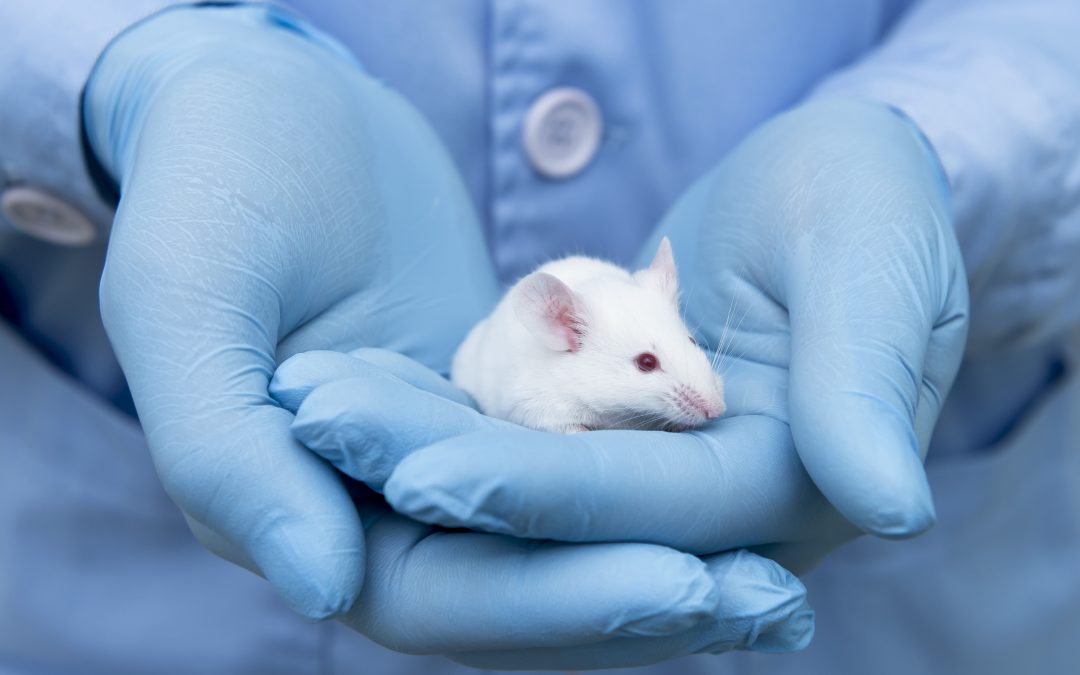Over the last several years, the prospect of precision gene editing as a method of treating diseases has greatly increased. A major part of the increase in interest was the development of CRISPR/Cas9. CRISPR/Cas9 is a tool for modifying genes using technology borrowed from bacteria. This system uses a strand of RNA that is designed to only match up to a specific spot in the genome. This “guide” RNA leads the Cas9 enzyme to the target segment, where the enzyme cuts the DNA. Scientists can use the cell’s own repair mechanisms to add or delete pieces of genetic material at the location of the cut, allowing precise control of genetic mutation.
As this technology has developed, scientists have made different modifications to the tool. Many of these involve changing the Cas9 enzyme so that it attaches to a gene and activates it, instead of cutting it. Initially, these modifications created molecules too big to fit inside the viruses used to deliver them to their targets. However, earlier this year, Science News reported that researchers had developed a way to shrink the guide RNA by over 25%: from 20 units to 14-15 units. This new tool, which is known as CRISPRa, attaches to a gene and attracts proteins that turn the gene on. The researchers released a study last December detailing several experiments they performed on mice aimed at treating different genetic diseases.
In one experiment, they attempted to restore insulin production in mice with type 1 diabetes. The mice were injected with viruses engineered to carry CRISPRa activators. These activators turned on a gene in the liver (called Pdx1) that allowed liver cells to produce insulin. With the liver able to pick up some of the insulin production capacity the pancreas lacked, the researchers were able to partially reverse the mice’s diabetes. However, don’t expect this approach to work in humans. The mice in the study were engineered to naturally produce the Cas9 enzyme required to turn on Pdx1 once the guide RNA located it. People don’t produce the enzyme naturally, and Cas9 is too big to fit into the same virus as the CRISPRa system for delivery. Scientists would have to investigate ways to deliver the two pieces separately.
The scientists went on to run another experiment which aimed to improve muscle mass in mice that suffered from a disease that mimics Duchenne muscular dystrophy, causing muscle loss and weakness in the legs and pelvis. Unlike the mice in the previous experiment, the mice in this study were not engineered to produce Cas9. To deliver the Cas9 enzyme to the treatment area, scientists used a two-virus approach. The first virus included the CRISPRa activator and guide RNA, just like in the first experiment. The second virus included the Cas9 enzyme. The results of the study showed that the treated mice had more muscle mass in their hind legs than a non-treated control group, implying that the two viruses were effective at getting both CRISPRa and Cas9 to the treatment site so they could do their work.
Scientists hope that these advances could make some types of gene therapy easier, and therefore more viable as a treatment option for human diseases. However, the safety and efficacy of these types of gene editing techniques for treating disease have yet to be proven in humans. It will likely be many years before these types of treatment might be viable for us.
For similar experiments involving mice or other rodents, Powers Scientific offers rodent chambers that are adaptable to a variety of environments. Our chambers offer a temperature and lighting-controlled environment with a temperature range of 6.5-50°C, and 0-15 fresh air exchanges per hour. Each chamber comes equipped with features such as clock-controlled lighting, solid doors, an interior outlet and access port, doors locks, an audible/visual alarm with relay, stainless steel construction, and casters. Many other options are available, including additional lighting or LED lighting, dual or multi-point temperature control for temperature stressing, top-mounted or remote compressors, extra-deep sizes, or RS-232 or data retransmit outputs. Our chambers are all built to order, allowing the individual researcher to tailor the incubator to fit the required parameters of the experiment without paying for features that aren’t needed.
For more information on our rodent incubators, see our product page, visit our contact page or call us at (800) 998-0500 and request a quote.

